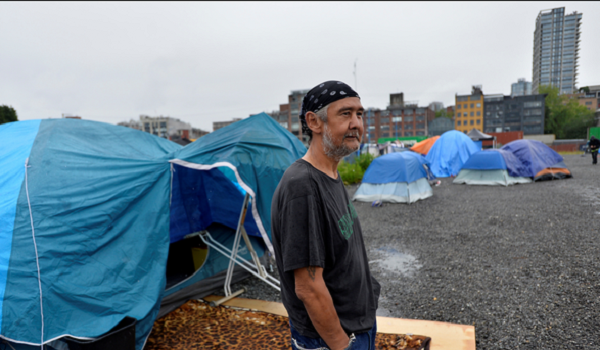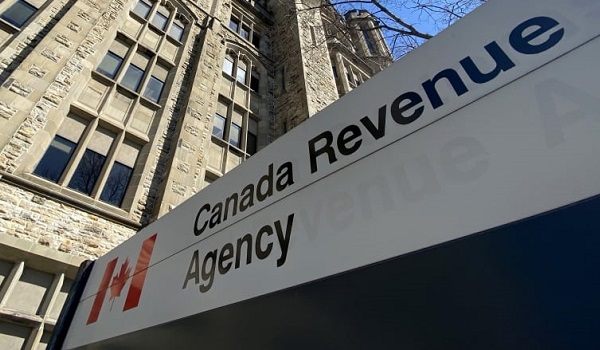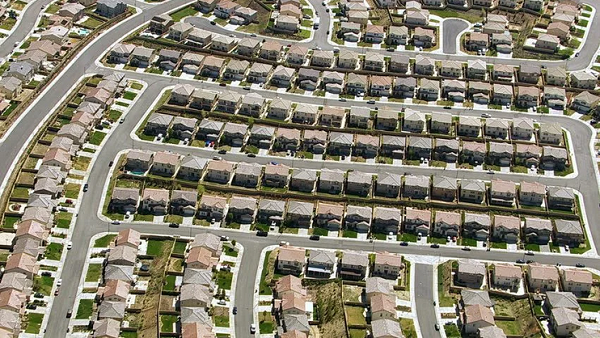The use of AI could help manage homelessness in Canada
Homelessness is a growing issue in Canada, experts say, and to tackle the problem, many organizations and government agencies are adopting new technology.
One of the “tools in the tool belt” is artificial intelligence (AI), which can sort data using algorithms to predict the future.
In some cases, this technology can help municipalities better understand who is at risk of being chronically homeless, a term used to describe people who have been without a home for a year or more.
Another algorithm can use thousands of data entry points to predict which communities in Canada will see a larger homeless population and the factors leading up to how people became unhoused.
“Theoretically, with AI, you could target preventative measures for individuals,” said Tim Richter, president of the Canadian Alliance to Ending Homelessness (CAEH). “AI might help a city planner, for example, in figuring out what kind of housing you need for who and what rent in neighbourhoods (could help) prevent homelessness.”
PREDICTING WHO IS AT RISK
In the aftermath of the COVID-19 pandemic, Craig Cooper, the director of housing stability services at the City of London, Ont., witnessed a doubling of people accessing the municipality’s shelter system.
“We are seeing almost three times as many people experiencing unsheltered homelessness in our community than we have at any other given time,” he told CTVNews.ca in an interview.
London is located in southwest Ontario, a couple of hours from the U.S. border, and hosts a number of post-secondary schools. Cooper said the city is on track to be one of the fastest-growing municipalities in the country, which is putting extra pressure on its housing and rental supply.
“We’re seeing a lot more seniors come through our doors, a lot more families … a lot more newcomers to Canada, including asylum seekers,” Cooper said. “In every direction, we are seeing folks that are experiencing homelessness.”
Like many cities in Canada, London’s social security programs are “underfunded, under-resourced, and over-demand,” Cooper said. This forces organizations to have a housing priority list, which determines who needs assistance first.
In order to come up with such a list, London deployed an AI algorithm in 2021.
“It’s a tool that we use that actually predicts somebody’s chance of becoming chronically homeless,” Cooper explained.
The AI was provided with a by-name list, which is a voluntary list used at city-run shelters and outreach supports, to estimate how at risk a person is of becoming chronically homeless based on their circumstances.
The model is proving to be helpful for experts working to get a better understanding of the situation, but Cooper said it is not going to solve the problem.
“Even if somebody shows that they’re going to be 100 per cent chronically homeless, we have nowhere to put them … we have no housing stock,” he said.
MODEL SHOWED HOMELESS PROJECTIONS IN CANADA
Data from 2018 showed on one day more than 25,216 people across 61 communities lived in a situation of homelessness, a Statistics Canada report published June 2023 reads.
It is estimated that within a year 235,000 people across the country experience one type of homelessness, the report notes.
Because AI can only predict outcomes, it falls to governments and organizations to use the knowledge it offers to prevent homelessness from becoming worse.
In Calgary, Alina Turner, the CEO of HelpSeeker, a technology company working to address social problems, told CTVNews.ca they were noticing a lack of urgency from officials.
As the pandemic was unfolding in 2021, her team of technology and AI experts deployed an algorithm that was able to predict where and by how much homelessness would increase post-COVID.
Using data from 60 different municipalities across Canada, the team gathered publicly available information on shelter usage, hidden homelessness estimates, inflation trends, unemployment numbers and other factors like housing and rental stock.
By coming up with different scenarios, the AI was able to predict which cities would likely see an increase in homelessness under these compounding factors.
Some of the predictions included how the Metro Vancouver Area and Greater Toronto Area would see an increase in homelessness at a faster rate than other urban centres. It also predicted that cities in southern Alberta as well as other Prairie provinces would see an “unprecedented influx” of homelessness.
After analyzing the calculations, Turner and her team went to governments across the country to “sound the alarm.”
“You can sound the alarm bells, but if nobody’s listening, or are not empowered to do something about it, for whatever reason, that’s kind of where the AI can die on the vine,” she said.
SHORTCOMINGS WITH AI
Despite the advances AI has made, there are still some shortcomings with the technology in addressing the issue of homelessness in Canada, Richter from CAEH emphasized.
“I think it would be fair to say that if we have good data, and if we have a clear understanding of the causes, then AI could be a tool to help prevent homelessness,” Richter told CTVNews.ca in an interview.
Understanding how many people are homeless in Canada is extremely difficult, Richter added. Some people who do not have a home may couch surf or could be wary of seeking government programs, which could lead to them not being counted by AI algorithms, or in
Many municipalities in Canada use a by-name list at shelters, which are sometimes forced to turn people away due to overcrowding. Other cities use a point-in-time count, which counts the number of unhoused people on a given day, providing only a snapshot of the issue.
Ultimately, Richter said AI is not a “silver bullet” solution.
“It can help us solve a problem as a tool, but it is not in itself a solution,” he said.
This article was reported by CTV News















